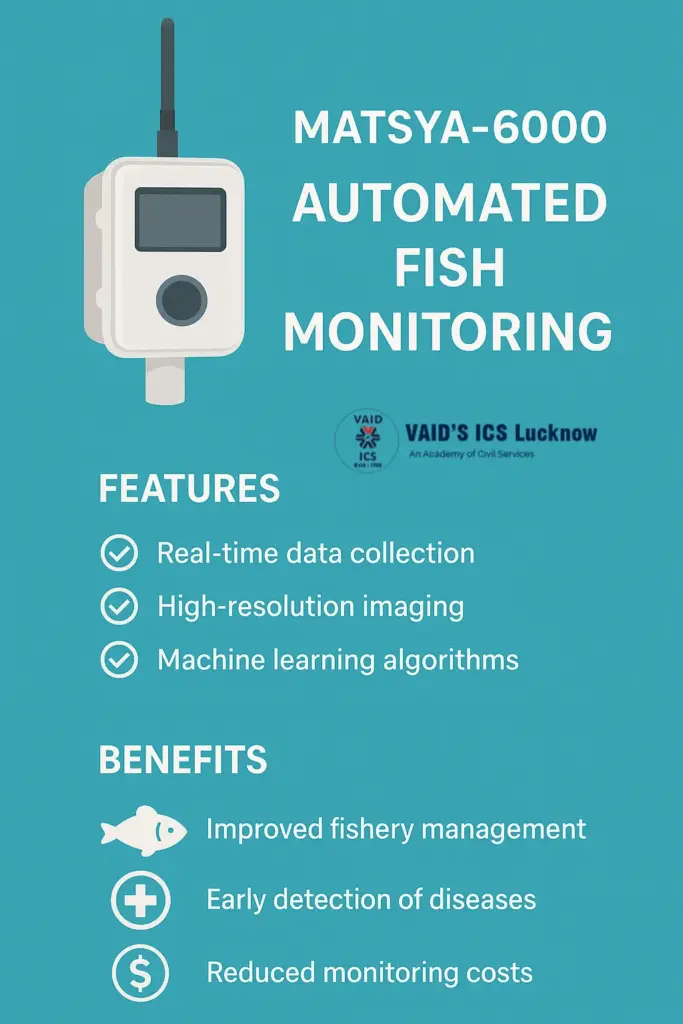August 29, 2025
Samudrayaan/ Matsya-6000
Why in the News?
India is gearing up for the Samudrayaan mission, which aims to send humans nearly 6,000 meters below sea level by 2027.
- Recently, two Indian aquanauts trained in the Atlantic Ocean aboard the French vessel Nautile as part of preparations.
- The National Institute of Ocean Technology is leading the mission.
About Samudrayaan & Matsya-6000:
Samudrayaan Project:
- Aim: Harness deep-ocean resources for economic growth and conservation of deep-sea biodiversity.
- Part of India’s “Blue Economy” policy.
- Goals include:
- Exploration of minerals (nickel, cobalt, rare earths, etc.).
- Deep-sea biodiversity studies.
- Technologies for freshwater from the ocean.
- Developing marine biology research.
- Approved in 2021 with Rs 4,077 crore budget for five years.
Matsya-6000 Submersible:
- Specially designed human-carrying vehicle to dive up to 6,000 metres.
- Structure: “Personnel sphere” of 2.1 m diameter, made of titanium alloy.
- Capacity: 3 people, 12-hour mission endurance (up to 96 hours in emergencies).
- Safety: Equipped with packed re-breather oxygen systems, carbon dioxide scrubbers, and life-support technology.
- A wet test was already conducted off the Chennai coast in February.
- It will withstand 600 times atmospheric pressure at 6,000m depth.
Challenges of Deep-Sea Exploration:
- High pressure: Even a tiny crack can collapse the sphere.
- Maintaining environment: Oxygen/CO₂ balance must be managed carefully.
- Limited human capability: Aquanauts can only stay a few hours, cannot use conventional communication.
- Acoustic communication used instead of radio waves.
- Need for precise vessel development and survival training.
Daily Gist of The Hindu/Indian Express: 6 Oct 2025
October 6, 2025
Daily Gist of Article /The Hindu /Indian Express: 24 Sep 2025
September 24, 2025
Gist of Daily News Papers Articles/The Hindu /Indian Express-23 Sep 2025
September 23, 2025
Daily Article Gist/The Hindu/22 Sep 2025
September 22, 2025

